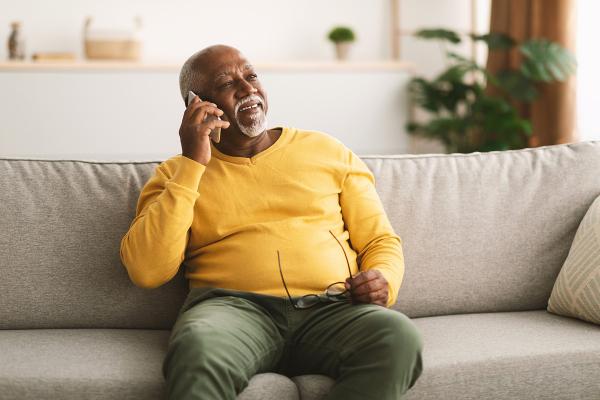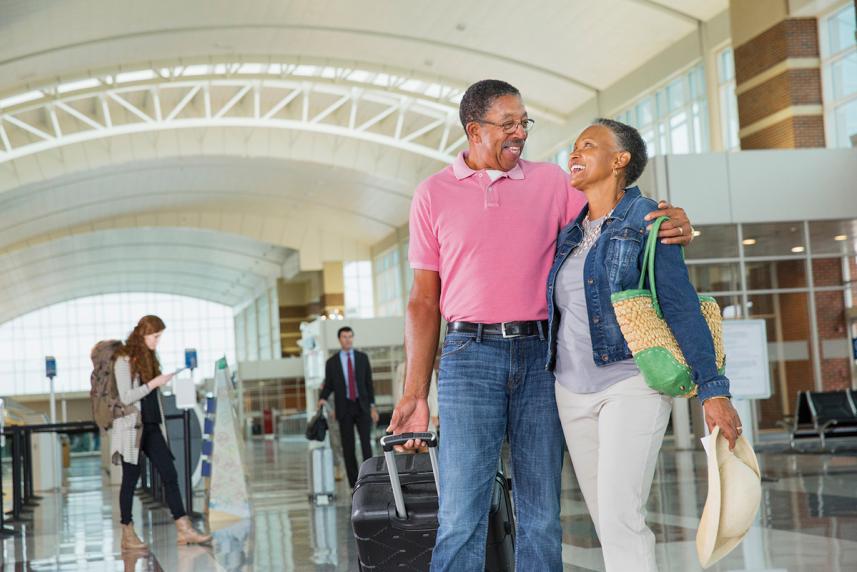
It may be time to get your hearing checked. AARP Hearing Solutions makes it simple. Find a provider today.
Do you have a vacation coming up? Here’s advice to help you enjoy a stress-free trip.

You don’t have to let your hearing aids ground you from traveling. Most of these devices are made for people on the move. They may help you hear new sounds around you, no matter where you are in the world.
Still, going on vacation when you wear hearing aids is a bit different than the trips you used to take before you wore them. You’ll need to think ahead as you pack so that you’re prepared.
Here are travel-friendly accessories to know about. Plus, tips to know before you board your plane or cruise ship for your next trip.
Some hearing aid features have particular appeal for travelers. If you’re in the market for new hearing aids and you’re a frequent flier, talk to a hearing care professional. AARP® Hearing Solutions™ provided by UnitedHealthcare Hearing has a wide network of providers. The program also offers discounts on hearing aids.
Ask about the following features:
Rechargeable batteries: Many of the hearing aids you can buy today are rechargeable.1 That means you won’t have to change those tiny, button-like disposable batteries.
Rechargeable batteries can be powered up via charging cable or docking station when not in use — just like your smartphone, tablet and other devices. That helps make travel easier, since you don’t have to remember to pack extra batteries.
Telecoils: A telecoil is a tiny receiver inside many hearing aids.2 Telecoils aren’t new. But this feature will help you if you visit public settings with induction hearing loop systems. These include travel hubs, museums, theaters and other venues, especially in Europe.
The loop broadcasts sounds and your telecoil picks them up. This allows you to hear a speaker or a soundtrack more clearly in a public space, with reduced sounds from the environment.2 When you’re sightseeing or on the go, look for “Hearing Loop” signs. All you have to do to connect to the system is push a button on your hearing aid.
To benefit from this technology, “make sure your hearing aid has a telecoil, and that the program is set up by a hearing care professional,” says Sum Yee Fong, Au.D. She’s an audiologist at NY Audiology in Flushing, Queens.
A telecoil in a hearing aid can also help reduce sounds from the environment and make it easier to hear when talking on a telecoil-compatible phone.3

It may be time to get your hearing checked. AARP Hearing Solutions makes it simple. Find a provider today.
Before you leave home on your trip, consider these tips:
Allow for an adjustment period if you just got hearing aids. It can take time to get used to a new or upgraded pair. Travelers who have new hearing aids should allow some settling-in time before a departure, suggests Fong. “You’ll feel more comfortable if you’ve worn them for a few weeks,” she says.
Pick your entertainment ahead of time. Want to watch an in-flight movie or binge your favorite series? Consider downloading it to your phone or tablet. Some airline entertainment systems use Bluetooth. But you may not know that until you’re on board. Or your hearing aids might not be connected to Bluetooth in the first place.
Pack the essentials in your carry-on bag. “Make sure you have everything you need to keep your hearing aids working well while you’re gone,” says Lesley Kirby, Au.D. She’s the owner of Lifetime Hearing Services in Florence, South Carolina. Sometimes checked luggage gets lost or arrives late. So, pack all your hearing aids supplies in your carry-on bag. Here’s a handy list:
Wear your hearing aids on travel day. There’s no need to stress about airport security. You can walk through the metal detector wearing your hearing aids, says Kirby. They won’t get hurt or set off the alarm. But if you’re nervous, just let the agents know you have hearing aids.
As an AARP® member, you get a trial period and upfront pricing — plus you can select the level of care that fits your needs. Learn more.
Practice your usual care regimen, and then some, when traveling. Follow these steps:
Focus on hygiene. Clean your hearing aids nightly before putting them on the charger. “Remove any wax or debris out of the domes or custom earmolds,” Kirby says. That way, they’re less likely to become nonfunctional or develop glitches such as feedback.4 Instead, they’ll be fresh when you go out to have fun the next morning.
Keep them dry. “If you are traveling to a humid place, use your drying component,” Fong says. Some charging units come with a special compartment and capsules for overnight drying. Or buy a dry-aid kit to manage moisture.
Store everything in one place. Find one counter space in your hotel room or rental house and keep everything there.
Of course, there will be hiccups and delays when you travel. There usually are. But with these tips, your hearing aids won’t be the thing slowing you down. If you’re still nervous before the trip, talk to your hearing care professional. They can set your mind at ease.
Sources
Information is for educational purposes only and is not a substitute for the advice of a licensed medical provider. Consult your provider prior to making changes to your lifestyle or health care routine.
AARP Hearing Solutions is available to all AARP members and does not require a health insurance plan from UnitedHealthcare. The AARP hearing program discount cannot be combined with any other discounts, promotions, coupons or hearing aid benefit plans unless noted herein. Products or services that are reimbursable by federal programs including Medicare and Medicaid are not available on a discounted or complimentary basis. AARP commercial member benefits are provided by third parties, not by AARP or its affiliates. Providers pay a royalty fee to AARP for the use of its intellectual property. These fees are used for the general purposes of AARP. Some provider offers are subject to change and may have restrictions. Please contact the provider directly for details. UnitedHealthcare Hearing is provided through UnitedHealthcare, offered to existing members of certain products underwritten or provided by UnitedHealthcare Insurance Company or its affiliates to provide specific hearing aid discounts. This is not an insurance nor managed care product, and fees or charges for services in excess of those defined in program materials are the member’s responsibility. UnitedHealthcare does not endorse nor guarantee hearing aid products/services available through the hearing program. This program may not be available in all states or for all group sizes. Components subject to change.
Network size varies by local market and exclusions may apply.